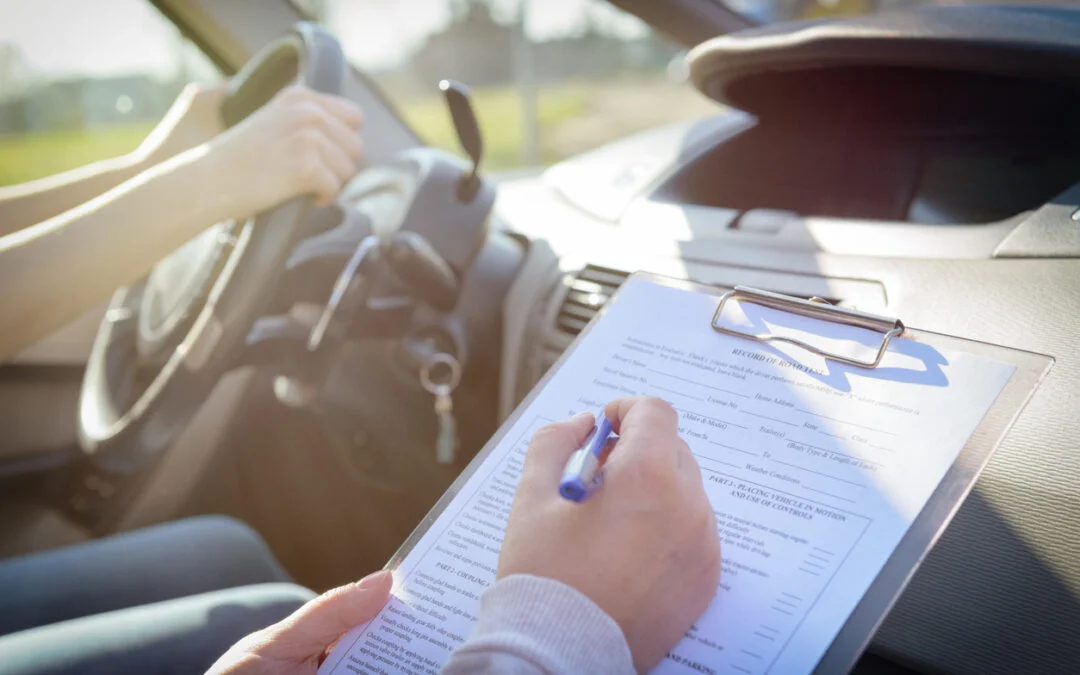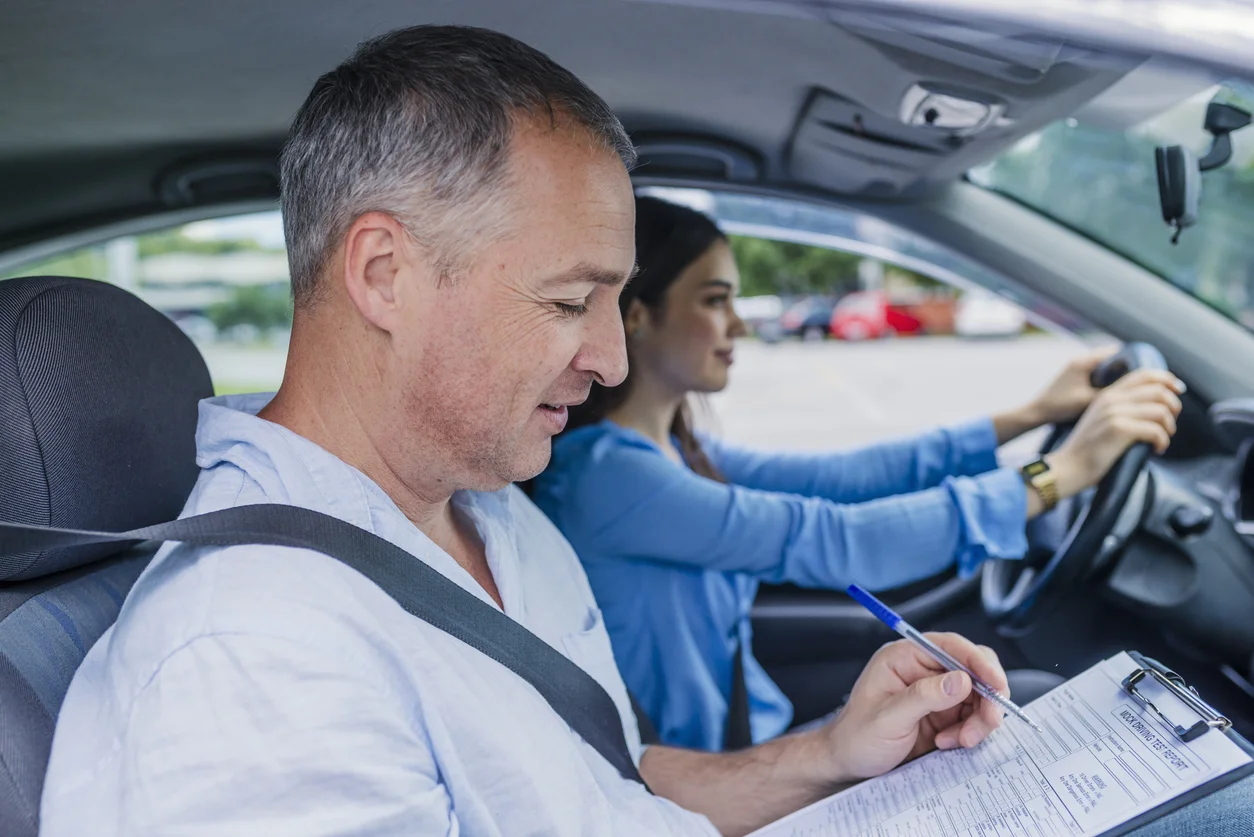What is the G road test?
The G road test is the final step of getting your full driver’s licence in Ontario. The assessment covers all the same sections and skills in the G2 road test, but also includes more advanced driving skills, like highway driving. So, before booking your test, you’ll need to be sure you are qualified to take it.
Booking your full G licence test
Once you have had your G2 for at least one year, you can book your G driving test.
To book a G road test, you will need to provide the following information:
- Driver’s licence number
- A preferred location
- Know the time and date you want to book
You can book your G licence road test appointment:
- By phone at 647-776-0331 or 1-888-570-6110
- On the DriveTest website
- In-person at a DriveTest Centre
G licence test requirements
In order to take the G road test, you’ll need to meet the following requirements:
- You must have a valid G2 licence
- You’ve had your G2 licence for at least 12 months
- Complete and sign ‘Declaration of Highway Driving Experience’ form
- Pass a vision test. Bring any corrective eyewear needed to drive to your test
FYI: Make sure that the car you bring has its registration, plates and insurance up-to-date, and that it’s in good working order. If the examiner doesn’t feel that the car is safe, they may cancel your test and require you to book another one.
What do I bring to my G test?
Before you arrive at your G test, you should be prepared with the following:
- Arrive 10 minutes early so the inspector can verify your credentials
- Valid G1 licence to prove you passed your written driving exam
- Valid G2 licence
- Supporting documentation (i.e. proof of insurance, health card proving date of birth and legal name)
- The G test fee is $91.25
What to expect on the G road test
According to completecar.ca, every driving test follows the same protocols. Below is a break down of what you should expect on your G road test. You can expect the G road test to take anywhere from 30-40 minutes.
Meet-up
During the first few minutes of your meeting with the examiner, they will:
- Confirm all of your provided documents
- Perform an eye examination
- Check to make sure your brake lights, headlights and windshield wipers are working properly
During the G road test (first 20 minutes)
The examiner will give the OK to begin your test. Make sure you fasten your seatbelt before driving. They will:
- Observe you backing out or pulling out of your parking spot. The examiner will note if you used your signal, checked your mirrors and blind spots.
- Instruct you to make some left and right turns. Make sure you signal properly before every turn.
- Note if you made a complete stop behind the white line before making a turn.
- Evaluate your driving ability on multi-lane roads. When turning on multi-lane roads, make sure you stay in your lane and do not cross lane markings.
- Ask you which vehicle has the right of way at a four-way stop. They will also observe defensive driving, driving on curves and space management.
- Watch your driving technique. Appropriate hand positions on the wheel, checking mirrors frequently, as well as smooth braking and accelerations.
During the G road test (last 20 minutes – highway driving)
Your instructor will then have you merge onto a highway. The examiner will:
- Instruct you to change lanes multiple times to test if you signal and check your blind spots before proceeding.
- The examiner will evaluate your knowledge of appropriate lanes for driving and passing. Remember, don’t tailgate! This is grounds for failure.
- Have you merge off the highway and ask you to drive through a school zone. Follow all road signs and speed limits.
- Observe you going through a crosswalk to ensure you have checked for pedestrians and other vehicles.
- Ask you to parallel park and do a three-point turn.
Tip: Constantly monitor your surroundings on the highway. Be aware that there should be at least a three-second gap between you and other vehicles. Review our G road test tips above frequently before testing!
After the test
Once you have completed the test, the examiner will inform you if you have passed or not. They will usually go over any small mistakes that you need to work on. If you do not pass on your first try, the examiner will tell you what you need to work on and explain what went wrong. You can then rebook your test.
Failing your road test
If you didn’t pass your G test, here are some things that can be considered an automatic fail on your G road test:
- Rolling stops
- Improper lane changing
- Lack of controlled steering
- Distracted driving
- Driving too fast (or slow)
- Changing lanes in an intersection
- Braking too hard
- Tailgating
- Not actively checking mirrors or blind spots
To learn more about the Level Two road test, click here.
G licence helpful tips
To ensure you have the best possible outcome, it is important that you try to get out behind the wheel every day before your test. Try to vary the time of day so that you can feel comfortable, no matter what examination date or time you book. The more experience you have, the greater confidence you will have on that day. Here are some other helpful G road test tips:
- Driving instructors are helpful. Before you take your G test, it is important to brush up on your driving skills. They can help get you feeling confident in passing the exam.
- Make sure your vehicle is working properly. Check your vehicle’s brakes, turn signals and fuel before leaving.
- Drive on the highway. Highway traffic makes up almost half of the road test. Make sure you spend enough time practicing on highways and reviewing all highway traffic signs and laws before taking it.
- Review the driver’s handbook. Review road signs and driving rules to ace your exam.
- Turn off your mobile device. Having your cellphone on and accessible during your test may prove to be too distracting if a call or text comes through during the test.
DYK: If you are not successful on your first attempt you can always take the road test again? However, if you fail your G road test and allow your driver’s licence to expire, you will need to restart from the beginning of the licensing process. This means retaking the knowledge exam and starting with a G1 licence.
For those of you preparing for your G licence road test, we at isure wish you the best of luck! We hope our G road test tips help better prepare you for this milestone. Remember, once you have passed your road test, be sure to contact us so that we can look at getting you the proper insurance coverage for this exciting new phase in your life.




